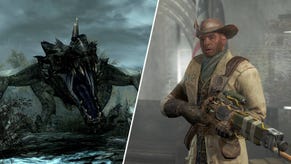Scandimania: Adventures in Finnish games, part one
VG247 tours Finland's games companies to find discs dead, investment capital flowing like champagne and mobile development everywhere. Patrick Garratt reports.
“Mobile phones are the new gold.”
Rovio’s North American general manager, Andrew Stalbow, is cod-advising us on investment through a cocktail grin. We all agree; earth’s social structure could collapse tomorrow and people would still want mobiles. These companies just have so much money, says Stalbow.
And he would know. Rovio’s Angry Birds is mobile gaming’s premiere success story. We’re at dinner in a concept restaurant in Finnish capital Helsinki, eating a meal so ludicrous it’s sublime. Between Finland’s most unhinged food team asking us to “open our hearts” to a repas designed to emulate a walk through the country’s beech woods, Stalbow and eccentric Rovio CMO Peter “Mighty Eagle” Vesterbacka are schooling us on gaming’s new frontier, a place of cookbooks and plushies, a world where units are not clocked in hundreds of thousands, but hundreds of millions. A world where you can create an international media event by wearing the right sort of dress.
We arrived to start our tour of the Finnish games industry the previous evening to find Helsinki black, freezing and bizarrely dead. December 6 is Finland’s independence day, a celebration of the country’s official split from Russia in 1917, and a night residents apparently sit at home in a grump over a grand party held at the presidential palace for Finland’s great and good. Vesterbacka’s wife, Teija, stole the show by wearing an Angry Birds dress, pictures of which flooded the internet overnight. Peter loved it; Finnish president Tarja Halonen less so.
“She didn't say anything,” Vesterbacka tells me of Halonen’s reaction over a green cocktail representing beech leaves. “Actually, that was one comment I made, that she should smile a bit more. That made the news. She's going to be out in January anyway.” He sniffs, noting upcoming elections.
Stalbow stops the the waiters giving him cocktails. He has work to do, he says. Vesterbacka, dressed in his trademark red bird hoodie, tells us he’s going after “Disney and TV” in 2012, that “next year will be much bigger” for Rovio. Someone asks jokingly if there’s anyone left in the world that hasn’t played Angry birds.
“Of course,” he snips, his smile failing to reach his eyes. “We were in Berlin recently, and we spoke to a taxi driver from Palestine. He hadn’t heard of Angry Birds. There’s a lot more we can do.”
Earlier that day, Eeva Haaramo, of national PR agency Finnfacts, explains to our group of British and American games journalists that people stay in on the country’s holiday because they’re “anti-party, not anti-independence”. We pass a “music house” on the drive to our first appointment which was “very controversial” among voters due to its expense, as was Helsinki’s opera house, thanks to its marble facade. Spending money, it seems, is not something to be happy about.
While the subject of public funds is a global unifier at the moment, Finland’s similarities to countries like Britain and America end quickly. Finland is backwards to us, a quirky land of opposites. We’re far north, even in Finland’s south, so the days are short; the sun rises at about 8.30am and sets at 3.30pm. We see an outdoor tropical garden; whereas summer is the main season in warmer climes and dictates a need of places to cool down, Finland’s weather means there are permanent fixtures in which you can heat up. Eeva describes last year’s winter, which came with record snow levels and crippled most of Europe over Christmas, as “good”.
She’s clearly disappointed there’s no snow. “It comes later and later every year,” she sighs.
As we arrive at the office of Finnish funding agency Tekes, talk switches to the previous evening. While I was eating in an empty restaurant with IGN’s Keza MacDonald and Pocket Gamer’s Matt Sakuraoka-Gilman on a night Helsinki should have been packed with people, the Register’s Caleb Cox and Wired UK's Duncan Geere found one of the north's smartest cities has a seedier side.
“Bar Chaplin,” says Cox. “There was an amputee wearing 3D glasses. He had a hook for a hand.”
Money, money, money
Tekes is the Finnish agency responsible for distributing government funds to the country’s tech industries, one of which is the games trade. It receives €550 million each year, of which €2-7 million is pushed into games firms, but the portion allocated to games is remaining static while the general spend declines under austerity measures. Relatively, government investment in Finnish games companies is rising. The Tekes investment in games is the largest of its kind in Europe.
The Finnish games industry is a collapsing nebula, a nursery, a section of European space clustered with embryonic stars. Finland has a population of 5.4 million people and over 70 games companies, largely built of start-ups birthed by the Finnish government’s benevolent gas cloud. Nearly 50 percent of Finnish games firms are less than two years old, and two-thirds of them have less than 10 employees. Revenue is slight; in 2008, only 42% of Finnish games companies beat €200,000 in annual turnover, although this rose to 54% by 2010, by which point 22% had made it over €1 million per year. It’s early days, but Tekes and friends hope that Finland’s stellar creche will one day form the central hub of a galaxy.
It’s unlikely there’s a national games trade more relevant to the fast-changing face of publishing on earth. This is not a industry making triple-A games, but rather seeking growth off the back of the rise of digital distribution and mobile. Whether or not digital is the way forward over brick and mortar retail isn’t a discussion in Finland. It happened: digital won.
It’s unlikely there’s a national games trade more relevant to the fast-changing face of publishing on earth. This is not a industry making triple-A games, but rather seeking growth off the back of the rise of digital distribution and mobile. Rovio’s success with Angry Birds is the prime example. KooPee Hiltunen, director of research monitor Neogames, tells us he “doubts” Finland will ever produce another disc-based big hitter, and cites Nokia’s recent misadventures as providing the talent needed for Finland’s swathe of tiny start-ups. Even Finland’s larger games companies have now dropped away from discs (assuming they ever needed them in the first place), the best known being Housemarque (Dead Nation), Frozenbyte (Trine) and Recoil (Rochard), none of which are involved with physical media at all. Remedy may yet produce a full Alan Wake sequel for disc, but caused a great furore recently by announcing Alan Wake’s American Nightmare as one of the first traditionally triple-A products to make the full switch to digital. Whether or not digital is the way forward over brick and mortar retail isn’t a discussion in Finland. It happened: digital won.
It’s not just the opportunities of the mobile and digital businesses changing the Finnish games industry; the traditional publishing model simply isn’t working in this part of the world any more.
"We are cold, we are distant, and we are expensive. Those are not very good starting points to get a publisher," says Hiltunen.
We go on to hear from Samuli Syvähuoko, the founder of Recoil and one of the original founders of Remedy. He details a tale of woe about Recoil being created in 2007 as Finland’s next great triple-A developer, taking €4.5 million in investment and putting together a demo for Earth No More, a high-end, post-apocalyptic FPS. While the team was pitching, the world’s finances went pop.
"We'd already spent all of our money," says Syvähuoko. "Nobody was looking for a new IP. Nobody was taking any risks."
He says Finns were "still delusional" about the games publishing model in 2007. "Tough s**t. But it was fun while it lasted. I have spent so much investor money," he says.
Recoil went bust and half the company moved on, leaving 20 Finns and one “crazy” Frenchman to try to get something together before everyone starved. Recounting logic we’re to hear many times in the coming days, Syvähuoko ditched the idea of ever getting a publishing deal, put together a quick, cheap game and aimed at the digital space.
Rochard, a cartoon physics platformer, released in September for PC and PSN. It was supposed to come out earlier, but PSN exploded in April and everything got pushed back, forcing Rochard into the heavy Christmas season. Syvähuoko admits sales haven’t been high, saying Recoil was “extremely unlucky with the timing," but he has more than enough content for “several sequels”. He’s looking at iOS and Android now. Again, this is a theme for the trip.
Before we leave the Tekes building, we see Trine 2. Developer Frozenbyte is a model for how to well handle core digital distribution. The Trine 2 team is only 25 people strong, but the product is perfect for PS3 and Xbox 360, and is a sweet-spot game for Steam. It’s simple, very attractive and is relatively cheap to make. DLC is planned for next year. Trine has succeeded by Frozenbyte staying nimble as the publishing world turns in on itself.
Outside it’s freezing, but the skies are snowless. We’re taken into central Helsinki. Pre-schoolers are ice-skating with padded parents on an open-air rink while older children speed along independently with stabilizing frames. Eeva buys us lunch at Finland’s national gallery. The cafe’s Finnish Plate boasts a selection of various types of reindeer meat.
“It’s got all 12 of them,” says Caleb.
Magic and lightbulbs
If two factors mark out the new Finnish games industry, they’re the arrival of iOS and a flood of start-up investment. Our next stop, Grey Area, is a perfect example of what’s currently happening in Finland. It’s small, it’s in an office full of bean bags in which you have to leave you shoes at the door, and it’s staffed by well-groomed young people with big smiles. Grey Area has published one game, Shadow Cities for iOS, and took €1.9 million VC from Index Ventures, London Venture Partners - of which ex-Sony figurehead Phil Harrison is one of four bosses - and Initial Capital in February 2011 to make it. The second round of money takes total investment to €2.5 million.
CEO Ville Vesterinen talks us through the company and its concept while a lady plays the game on a screen behind him on an iPad. Vesterinen has flicked hair, tortoise-shell glasses and a Marlboro voice. Grey Area was set up in 2009 by three ex-Ericsson staffers. Vesterinen describes iPhone as “magical,” a device which allowed them to action their location-based ideas. Shadow Cities released in Finland in 2010 and did well on the Finnish App Store. It launched in the US in mid-2011. The company’s now grown to 16 staff and a second game, the identity of which Vesterinen keeps to himself, will hit around April 2012.
The “grey area” is the place between reality and game. Shadow Cities is an iOS MMO in which you play in real cities according to physical location. You join one of two global teams, conquer areas, fight opponents and level up. It’s a magic-based affair, played on a map in real-time. Money, primarily, comes from selling mana for spells, although the app is free.
Vesterinen talks about emergent gameplay in which New York residents created pillar markers around Ground Zero during a 9/11 memorial, and the problems of grouping people together in location-based games (you can jump to any area of the world where you have a friend, skirting the need for physical movement). He describes “battle groups,” and talks mainly about New York and California in the US; unsurprising, given they’re typically populous regions.
It’s interesting. iOS has allowed small Finnish teams to take on investment and emerge as games firms without ever needing to look at consoles and PC. Vesterinen, however, won’t tell us how many people are playing Shadow Cities. The obvious question is whether or not it’s profitable.
“The monetization has worked really well for us,” he says. “If you look at the mobile space in general, one of the biggest challenges is discoverability. As a company, you want to have a portfolio of games, whatever you do. Having screen real estate this big,” he says, picking up his iPhone, “and having half a million applications is challenging, whether you’re Grey Area or EA. But yeah, it’s worked out really well for us.”
They’re now looking at Android, although spend on apps is apparently only 20% that seen on iOS.
With organic, visibility and fragmentation buzzwording in our ever-colder ears, we’re led back into our bus and off to Supercell, the biggest start-up we’ll see on the trip. When we arrive we’re greeted with champagne, then ushered into an immaculate boardroom beyond a giant logo dripping with Christmas lights.
CEO Ilkka Paananen is an intense man in an ironed shirt. He kicks up PowerPoint and his staff, Supercell t-shirts and all, crowd at the door with their iPads to watch. Within a few minutes he's on his feet, unflappable, waving a glass of bubbly and predicting the death of consoles.
“We very much believe that the consumption of games and entertainment is general is shifting to casual, connected platforms, away from games-specific targetted devices like consoles,” he says. He predicts tablets will become the de facto form of accessing all entertainment in “a few years”.
Supercell’s “dream” is to bridge the world of WoW and Zynga. Facebook and the general browser is the target for the developer’s first release, action-RPG Gunshine. It is, we’re assured one of the most expensive Flash productions ever completed. It’s free-to-play with micro-transactions and has an audience of 300,000 monthly active users. It launched on Facebook in November 2011 and was expanded with zombies in late December.
We go on to see upcoming Supercell games Pets vs Orcs and Battle Buddies, both for iOS and Android, phones and tablets. The former, a cute management sim, was retro-developed from a focus-tested concept. Battle Buddies is turn-based combat game using touch. It’s like top-down Worms, I guess. They’re both out in 2012.
Supercell is a revelation. I’ve visited many games developers, and this is not a small operation. It’s grown from six to 46 employees in less than 18 months, fuelled by €15 million in seed funding from Initial Capital, Lifeline Ventures (of which Paananen is a partner), Accel Partners, London Venture Partners and others. The lightbulb factor here is that Supercell, as with Grey Area, has absolutely nothing at all to do with consoles and PC executables. This is about connecting social networks to instantly accessible content on browsers, mobile and tablets. This company is not arguing the viability of non-traditional platforms: it’s betting the farm on it. For me, this is a first. Within these walls the entire notion of “triple-A,” walled tech coupled with a publisher model, is dead. Paananen has the glass of champagne to prove it.
Before we leave, boundlessly energetic and extraordinarily white-haired marketing manager Marika Appel has us decorate cookies to hang on Supercell’s Christmas tree. I write “boo” in white icing. Keza makes a carefully detailed IGN logo. The Americans, EGM’s Brady Fiechter and Eli Hodapp from Touch Arcade, look extremely fucked, both sighing heavily beneath sunken eyes. Eeva runs away to a party leaving us with some free time at the hotel before dinner with the husband of the owner of the most famous dress in Finland.
The real McCoy
The Helsinki World Trade Centre is lifted straight from the pages of a Tom Wolfe novel, all stained panelling and embossed leather, unused decanters and chandeliers. Morose suits squelch from the early morning rain under mechanical clocks which proudly display Tokyo and London time. Petteri Koponen, a partner of venture capitalist Lifeline Ventures, appears to be perpetually amused by his surroundings.
“Welcome to the 80s,” he giggles, injecting us with choke-strong coffee from dainty china cups.
Lifeline, as with all else in the new Finnish games industry, is small and young. It has made six investments in games so far, and only 17 in total. Thanks to its age, it has a nonexistent failure rate. A typical investment would be in the region of €100-150,000, with a further €300,000 coming from Tekes, the government agency. Koponen describes Lifeline’s relationship to Tekes as “scarily close”.
These people are looking for companies that can lead categories and could potentially be worth €100 million. Supercell is a main investment. Lifeline “always communicates to the founders that we’re OK to lose our investment. It’s not very well protected. We don’t focus on protecting the downside. When a company is not getting traction or something’s really wrong and it can’t be protected, we usually just say to the entrepreneurs, ‘Just stop whatever you’re doing now and think about how much cash you have left.’”
Lifeline takes companies from zero, gives them money, combines investment with backing from the Finnish government and doesn’t appear to mind if nothing works. Lifeline’s stake in return for its help is normally less than 20%. Eli and I, especially, are struggling to grasp the realities of starting up in Finland; €450,000 for an idea that can go wrong with no consequence? Seriously?
Talk swings to the ever-present topic of ditching publishers in the move to mobile and social. “Publishers haven’t really found a space yet,” says Jussi Laakonen, founder of Facebook games marketing system Applifier and a “failed” triple-A developer from Bugbear.
“I think it’s coming, because the cost of investment’s going up and the market’s getting more specialised, but what does a publisher really add? Chillingo doesn’t give you funding; it just gives you distribution, and they don’t give you any upfront guarantee, just a spot in their roster. Why would I sign up with that?”
He adds: “We’ve seen a huge explosion in gaming and valuations. If you were to look 5-7 years back, no one in their right mind would invest in games, because the publisher reaped all the economics. Social and mobile really opened up the field for VC investing and the pay-out being there.”
We see presentations about uplause - a gamification idea for big screens at events - and a start-up developer called Grand Cru. The firm’s first game is a “"synchronous mmo" with "rich interaction," a free-to-play effort with a virtual economy for phones, tablets and browsers. It’s inspired by LittleBigPlanet and Minecraft, with the player taking charge of a superhero. We see iPad gameplay, with the player digging a hole to uncover presents.
It’s clearly early, but CEO Markus Pasula is incredibly bullish. He’s passionate about free-to-play as the dominant model going forward, saying it will "completely transform gaming,” and that "it's not a phenomenon that's going away. There's a lot of old guard that need to adapt."
When I ask how many users Grand Cru needs to attract to cover company costs, Pasula says he hasn’t thought about it. When I ask him what sort of audience he’s aiming for, he says, “Tens of millions of users.” I nearly fall off my chair.
As Koponen shuts his PowerPoint down, I’m caught by the wallpaper on his MacBook. It’s the same as the background on the laptop of Ilkka Paananen, the head of Supercell. I have it on my own PC at home. It’s an HD shot of Andromeda, the closest major galaxy to our own Milky Way.
Hundreds of billions of stars burning bright; so near; so far.
Get part two here.





















